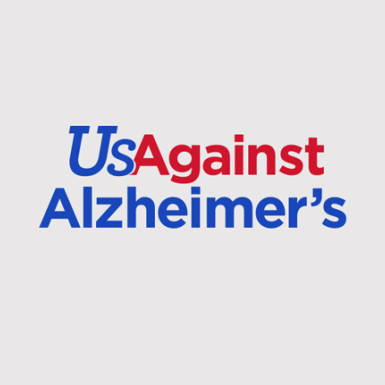A road map for including Latinos and African Americans in Alzheimer’s research

Sign up and receive information on the latest news and updates.
*This piece originally appeared in STAT News.
Alzheimer’s disease is the only leading cause of death in the U.S. that is still on the rise and that does not have a current effective treatment or cure. The limited inclusion of Latinos and African Americans in research will only worsen the outlook, though the success of efforts bubbling up across the country could help us keep up with the disease.
The face of Alzheimer’s is changing, largely because the No. 1 risk factor for it is advanced age. By 2030, the number of Latinos age 65 and older will have grown by 224% and the number of African Americans will have grown 114%, compared to 65% among non-Hispanic whites. As Sen. Amy Klobuchar (D-Minn.) recently reminded us, by 2030 Latinos and African Americans will make up nearly 40% of the 8.4 million Americans living with Alzheimer’s.
Closing the inclusion gap will be no small feat. UsAgainstAlzheimer’s, the organization we work with, recently analyzed more than 300 peer-reviewed studies of non-drug interventions for Alzheimer’s and dementia. Just under 4% of them focused on communities of color. Overall, just 5% of the studies included even a general strategy for recruiting underrepresented communities. This is startling given the fact that African Americans are two to three times more likely to develop Alzheimer’s than non-Hispanic whites, while Latinos are 1.5 times more likely.
The stakes are high given the setbacks in Alzheimer’s drug development and the growing impact of the disease on families and our economy. For example, the total cost of Alzheimer’s in the Latino community alone will reach $2.3 trillion by 2060 if the trajectory of the disease maintains its current course.
There are a few success stories that offer a road map for advancing equity and access in brain health at a critical turning point for the field.
In Kansas City, the Global Alzheimer’s Platform Foundation and UsAgainstAlzheimer’s are working with six community-based organizations and the University of Kansas Alzheimer’s Disease Center to build bridges between the health system and under-resourced communities to address the impact of Alzheimer’s on Latinos. Partners use engaging, familiar content like the Disney film “Coco” to promote knowledge about brain health through educational presentations, film screenings, staff training, and outreach to health care providers who work with minority populations. This approach is having an impact, showing increased knowledge about this highly stigmatized disease in a community often disconnected from the health system.
In North Carolina, the Center for Outreach in Alzheimer’s Aging and Community Health uses techniques pioneered by founding director Goldie Byrd to understand a community’s needs before broaching the subject of research engagement. Byrd’s “community first” approach has resulted in increased study participation and helped researchers better understand the role that genetic ancestry plays in Alzheimer’s risk among African Americans.
Efforts like these complement the work of dozens of diverse investigators at institutions across the country working to address Alzheimer’s disparities. But the demographic shifts our nation is experiencing demand urgent action — at scale.
There are four steps the health care system, researchers, and policymakers can take to better prepare for these shifting demographics.
Promote early detection and diagnosis. Despite a higher risk for Alzheimer’s and dementia, African Americans and Latinos living with these conditions are less likely than non-Hispanic whites to receive a diagnosis from a provider. The CHANGE Act is bipartisan legislation reintroduced this year that prompts the Centers for Medicare and Medicaid Services to improve its guidance to providers about assessing Alzheimer’s, and it deserves action from lawmakers. The American Academy of Neurology recently issued a report stating that “knowing the cognitive health status of high-risk patients … has inherent clinical relevance.”
Broaden criteria for research eligibility. Strict eligibility criteria for Alzheimer’s trials can lead to limited representation of minorities in clinical research, especially given the multiple chronic conditions that African Americans and Latinos often face. Incentives are needed to make it easier for industry to work with the FDA to broaden eligibility criteria for Alzheimer’s clinical trials in order to increase diversity and retention.
Better information on social determinants of health. Collecting and mapping data on social determinants of health will address gaps in Alzheimer’s research and health services. Harnessing such data has led to progress against diseases like breast cancer in Chicago’s predominantly black South Side.
Expand medical and family leave. According to a national poll of dementia caregivers, more than half of those surveyed who used paid family leave benefits reported positive effects on their ability to provide care and on their own emotional well-being. Latinos and lower-income caregivers were less likely to have access to these benefits. It’s time to pass bipartisan legislation to expand paid medical and family leave for family caregivers.
Small gains are being made across the country to narrow disparities in the diagnosis and treatment of Alzheimer’s disease. But systematic change is needed to fully address this shared challenge. From easing the economic hardship of dementia care to improving access to cutting-edge research, patients and families are waiting for inclusive solutions. It’s past time to act.
Jason Resendez and Stephanie Monroe co-chair the Alzheimer’s Disease Disparities Engagement Network, a program of UsAgainstAlzheimer’s.
